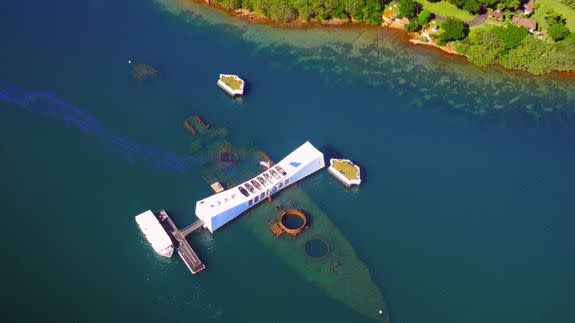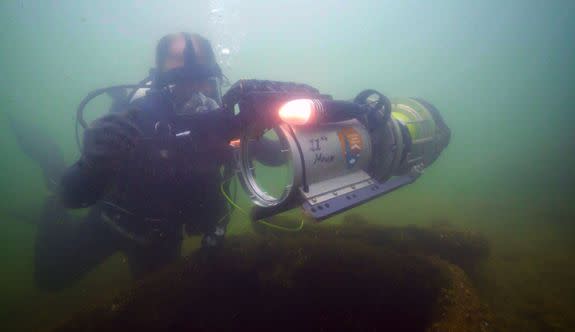A new underwater robot captured eerie, high-def scenes from sunken ship

A new type of underwater robot has made it possible to peer deep inside the USS Arizona, the sunken naval battleship that was bombed 75 years ago at Pearl Harbor, Hawaii.
The remotely-operated submersible recently filmed sobering and previously unseen glimpses of the ship for the new documentary Pearl Harbor: Into the Arizona, a co-production of CuriosityStream and PBS.
SEE ALSO: Red-eyed robot snake designed to be a janitor for the ocean bed
In the film, an officer's dress uniform, now covered in algae, still hangs from its hook in the living quarters. A crewman's hat keeps its shiny trim. A bathroom cabinet holds its original contents, while a blanket covers an intact bed.
The Arizona was hit four times by Japanese bombers on Dec. 7, 1941 and eventually sank. About half the 1,117 crewmen killed that day were aboard the battleship.
Since then, nobody has seen inside the Arizona below its second deck. The U.S. National Park Service forbids non-official diving at the site and doesn't allow people to enter the ship's hull.
Earlier underwater robot models weren't able to navigate the tight spaces without getting tangled in the cables connecting them to home base on the surface, according to the producers of the new documentary. Low lighting conditions made it difficult to capture high-quality images as well.

Image: curiositystream
So the team brought in a new underwater robot developed by Marine Imaging Technologies. The remotely-operated vehicle, named the 11th Hour, has a self-spooling function that eliminates entanglement with cables, and its ultra-high definition 4K 3D camera system brings new clarity to images on the seafloor.
The filmmakers partnered with the National Park Service's Submerged Resources Center and Woods Hole Oceanographic Institution to capture images of the Arizona's bottom decks.
"With only a handful of USS Arizona survivors still living today, and so few others who were alive when the attacks took place, we have an obligation to preserve and record these lessons of history for future generations," Jorge Franzini, a CuriosityStream producer, said in a statement.
"We've only penetrated the surface of what this technology is capable of," he added. "It's exciting to think where the 11th Hour might explore next."
